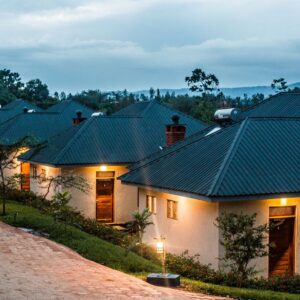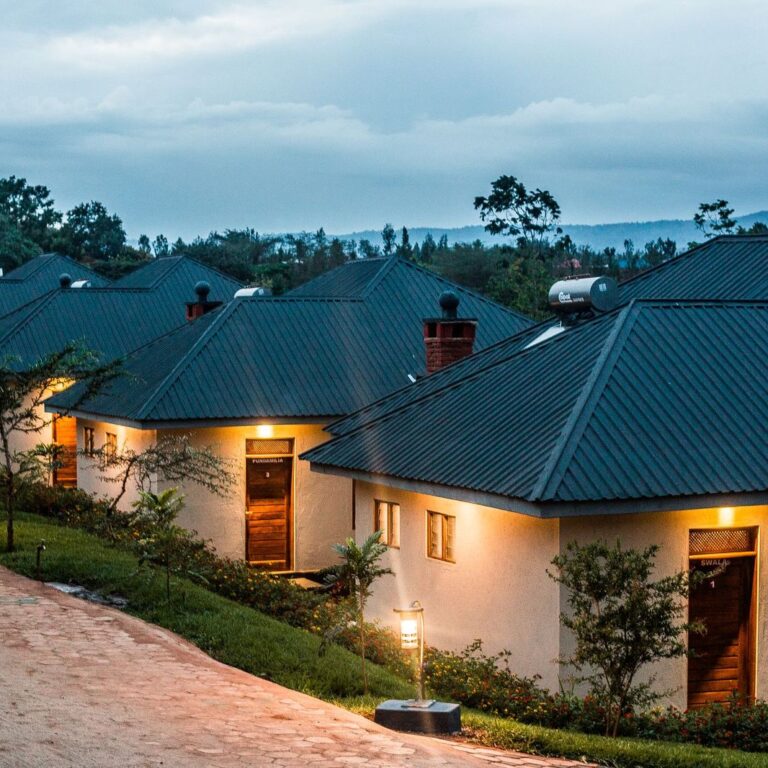Climbing Mount Kilimanjaro, the “Roof of Africa,” is an aspiration for many. Thousands flock to its slopes each year, drawn by the promise of standing atop Africa’s highest peak, witnessing unparalleled sunrises, and earning bragging rights to an extraordinary feat. Guidebooks and brochures paint a picture of adventure, breathtaking vistas, and triumph. But beneath the glossy surface, there are aspects of the Kilimanjaro experience that often go unmentioned, unspoken realities that can profoundly impact your climb. Knowing these “things they don’t tell you” can be the difference between a challenging yet successful ascent and a struggle against unforeseen obstacles.
Climbing Kilimanjaro is a challenging trek with unexpected elements. Be prepared for unpredictable weather, including extreme cold and strong winds, especially on summit night. You’ll hike overnight, move very slowly for acclimatization, and may experience altitude sickness, including headaches and nausea. The experience also includes limited access to amenities like showers and toilets, and you’ll be out of touch with the outside world.
1. Acclimatization is Crucial (More Than Just a Suggestion)
While tour operators emphasize acclimatization, the true depth of its importance is often understated. It’s not just about taking a few rest days; it’s about giving your body the time to physiologically adapt to decreasing oxygen levels. Many first-time climbers underestimate the body’s response to altitude, thinking fitness alone will suffice. But even elite athletes can succumb to Acute Mountain Sickness (AMS) if they ascend too quickly. Extended itineraries (7-9 days) are not just “more expensive”; they are safer and significantly increase your summit chances by allowing for a more gradual, natural acclimatization process. Ignoring this fundamental principle is the quickest path to discomfort, or worse, forced descent.
2. Expect Unpredictable Weather (Even on a “Dry” Day)
You can check weather forecasts, choose the “best” season, and still encounter four seasons in a single day on Kilimanjaro. While the dry seasons (Jan-Feb, June-Oct) are generally more stable, sudden downpours, strong winds, and even snow flurries are always a possibility, especially at higher elevations. The mountain creates its own microclimates. Layers, waterproof outer shells, and being prepared for any eventuality are paramount. Don’t assume a sunny morning means a sunny day; the mountain can change its mood in an instant.
3. Summit Night is an Overnight Trek (Not Just an Early Start)
This is perhaps the most significant surprise for many. Summit night doesn’t begin at dawn; it typically begins around midnight or 1 AM. You’ll wake from a short, often restless sleep, bundle up, and begin a slow, arduous ascent in complete darkness, guided only by headlamps. You will trek for 6-8 hours before sunrise, reaching the crater rim or Uhuru Peak as the sun begins to illuminate the world below. This overnight effort adds an immense psychological and physical toll that many are unprepared for.
4. You Will Move Very Slowly (“Pole Pole” is Not a Suggestion)
“Pole pole” (Swahili for “slowly slowly”) isn’t just a friendly greeting from your guides; it’s the golden rule of Kilimanjaro. You will move at a pace that feels ridiculously slow, often slower than a casual stroll. This deliberate pace is crucial for acclimatization, conserving energy, and minimizing the risk of AMS. Resisting the urge to speed up, even when you feel capable, is vital. Your guides enforce it for your safety, not to annoy you. Climbing Kilimanjaro, while achievable for many, presents some hard truths. It’s not just a hike, and you won’t feel good all the time due to altitude sickness. Success rates are lower than often quoted (around 65%), and the weather can be unpredictable and miserable. It’s also expensive, and you’ll be sharing the mountain with many others. Furthermore, you need to be prepared for the physical and mental challenges, including potential health issues like hypothermia and injuries.
5. Headaches and Nausea Are Common (Even with Acclimatization)
While proper acclimatization reduces the risk of severe AMS, mild symptoms like headaches, lightheadedness, and mild nausea are very common at altitude. Don’t panic if you experience them; they’re often normal physiological responses. The key is to communicate openly with your guides, stay hydrated, and manage symptoms with over-the-counter pain relievers if needed. Differentiating between normal symptoms and warning signs of severe AMS is where your guide’s expertise becomes invaluable.
6. Trekking Poles Are Highly Recommended (More Than Just for Balance)
Often seen as optional, trekking poles are an absolute game-changer on Kilimanjaro. They not only aid balance on uneven terrain but significantly reduce strain on your knees during both ascent and descent, especially on the long, steep scree slopes. They help maintain rhythm, distribute effort, and conserve energy, making the overall trek less taxing on your body.
7. Pack for Extreme Cold (Even If It’s Sunny at the Base)
While lower altitudes are warm, the summit night on Kilimanjaro is bitterly cold. Temperatures can drop well below freezing, combined with wind chill, making it feel sub-zero. You need serious layers: thermal base layers, fleece, a good down jacket, waterproof outer layers, a warm hat, thick gloves/mittens, and warm socks. Do not underestimate the cold at 5,000+ meters. A comprehensive Kilimanjaro packing list for beginners should include essential clothing for layering, durable and comfortable hiking boots, a warm sleeping bag and pad, and gear for hydration and sun protection. Don’t forget a sturdy backpack, trekking poles, and a headlamp for navigating in the dark.
To successfully climb Mount Kilimanjaro, prioritize physical training, altitude acclimatization, and proper gear. This includes building endurance, strength, and cardiovascular fitness, as well as getting used to hiking with a backpack and boots. Mental preparation, including visualizing success and managing potential altitude sickness, is also crucial.
8. You’ll Be Out of Touch (Embrace the Digital Detox)
Except for sporadic, weak signals on certain routes at specific points, expect to be largely off-grid for the duration of your climb. Cell service is unreliable to non-existent on much of the mountain. There’s no Wi-Fi. This forced digital detox can be liberating, allowing you to fully immerse yourself in the experience and connect with your climbing team. Inform loved ones that communication will be limited.
9. Prepare for Limited Amenities (It’s Camping, Elevated)
Unless you’re on the Marangu route with its basic huts, you’ll be camping. This means sleeping in tents (which can be surprisingly comfortable), using basic pit toilets (sometimes quite primitive), and having no showers for days. “Bucket showers” might be offered by some operators, but they’re quick and cold. Embrace the grime; it’s part of the adventure. Wet wipes and hand sanitizer become your best friends.
10. Hydration is Key (More Than Just Quenching Thirst)
You’ll be encouraged to drink 3-5 liters of water per day, far more than you might be used to. This isn’t just about avoiding dehydration; it’s a critical component of altitude acclimatization. Adequate hydration helps your body process oxygen more efficiently and can alleviate mild AMS symptoms. Force yourself to drink, even if you don’t feel thirsty.
11. Consider Your Route Carefully (They’re Not All Equal)
Kilimanjaro offers multiple routes, each with different lengths, difficulty levels, and acclimatization profiles. Some, like the Lemosho or Machame, are longer and offer better “climb high, sleep low” opportunities, leading to higher success rates. Shorter routes like Marangu or Umbwe are cheaper but significantly increase the risk of AMS. Research routes thoroughly and choose one that aligns with your fitness, experience, and budget, prioritizing acclimatization. Before climbing Mount Kilimanjaro, it’s crucial to be prepared for the challenging trek and varying conditions. Key considerations include altitude sickness, which is a major factor, along with physical training, choosing the right route and tour operator, and packing essential gear. Understanding the weather patterns, which can change dramatically, and being prepared for cold temperatures are also vital.
12. Be Prepared to Tip Your Crew (It’s a Significant Part of Their Income)
Your climbing crew—guides, assistant guides, cooks, and porters—work incredibly hard to ensure your safety and comfort. Tipping is customary and a significant portion of their income. While specific amounts vary by group size and duration, be prepared for this substantial expense (often several hundred dollars per climber). Your tour operator will provide clear guidelines. Before climbing Kilimanjaro, it’s crucial to understand the importance of acclimatization, the need for proper gear, and the physical and mental demands of the climb. Specifically, climbers should be prepared for altitude sickness, the cold and variable weather conditions, and the challenging summit night. Additionally, choosing the right route and being aware of the tipping culture are important considerations.
13. Mental Resilience is Tested (It’s More Than Just Physical)
Kilimanjaro is as much a mental challenge as it is physical. The slow pace, the cold, the fatigue, the potential for mild discomfort, and the sheer duration of the summit night can wear down even the most determined individual. Maintaining a positive attitude, focusing on one step at a time, and drawing strength from your team are crucial. The mind can be your greatest asset or your biggest obstacle. Mount Kilimanjaro, located in Tanzania, is famous for being the highest peak in Africa and the world’s tallest free-standing mountain. It’s a dormant volcano with three volcanic cones: Kibo, Mawenzi, and Shira. Interestingly, despite its location near the equator, it boasts glaciers and snow at its summit.
14. The Descent Can Be Challenging (Don’t Underestimate It)
After the elation of summiting, the descent often comes as a rude shock. The long walk down, especially the scree slide from the summit, can be brutal on the knees and quads. It’s often quicker than the ascent but equally demanding. Don’t let your guard down on the way down; injuries are common when climbers become complacent or overly tired.
15. You Will See Amazing Landscapes (Beyond Just the Summit)
While the iconic summit view is the ultimate prize, the journey itself traverses incredible ecological zones. From lush rainforests teeming with monkeys, through heath and moorland, into alpine desert, and finally the stark, glaciated summit zone, the changing scenery is truly breathtaking. Don’t be so focused on the top that you forget to appreciate the diverse beauty of the mountain on the way up and down.
Kilimanjaro is an extraordinary adventure, and being prepared for these unspoken realities will allow you to embrace its challenges, appreciate its grandeur, and ultimately, stand tall on the Roof of Africa with a deeper sense of accomplishment.
The Best Acclimatization for Climbing Kilimanjaro
Do I Need Trekking Poles to Climb Kilimanjaro?
Thrilling 6-Days Marangu Route
Kilimanjaro Climb and Safari Packages
Kilimanjaro Altitude Sickness and other Health Considerations







